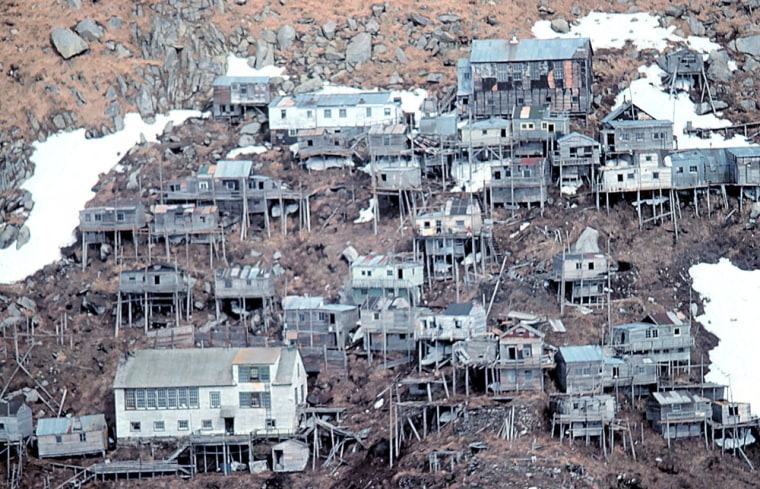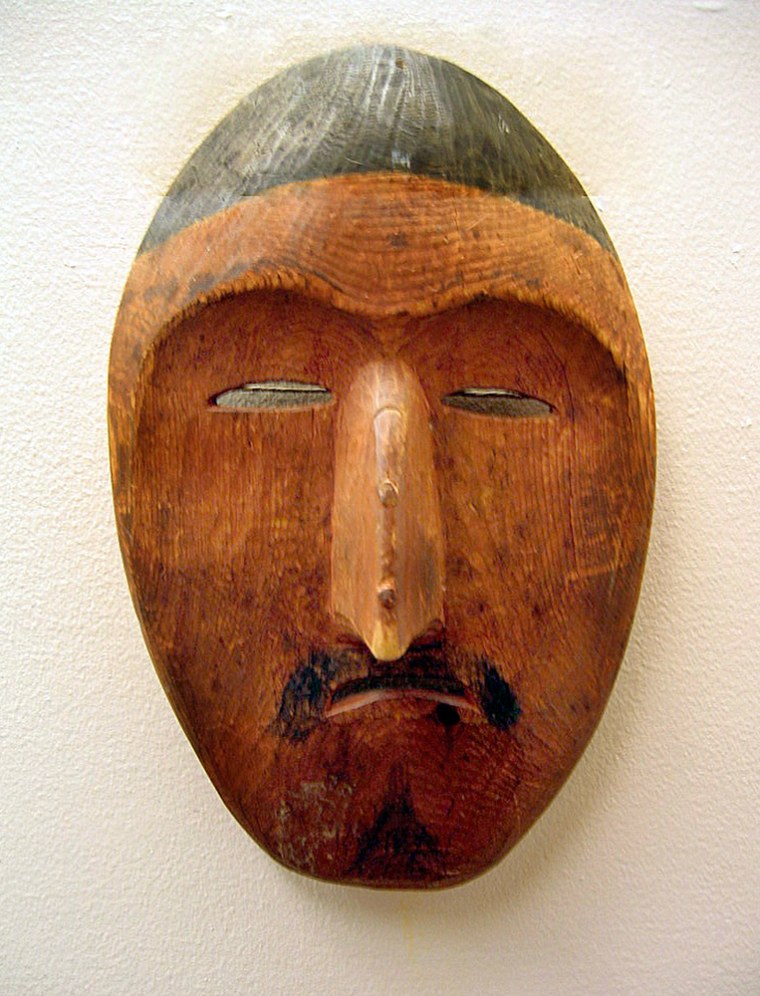Four decades after it was abandoned, King Island holds an almost mystical pull for former inhabitants and their descendants, its crumbling homes still perched on stilts, clinging to the steep, rocky terrain.
Until recently, little else remained of the island, an Inupiat Eskimo village, except for traditions, memories and artifacts scattered at museums around the nation. Then came word from a stranger nearly 2,000 miles away who said she possessed an ancient mask a relative brought back from Alaska more than a century ago.
On the back of the relic was a faint inscription: "Taken from a medicine man's grave on King Island."
The woman from northwest Washington e-mailed Charlene Saclamana, tribal coordinator with the King Island Native Community based in Nome, a city 80 miles southeast of the tiny Bering Sea island where many of its residents relocated.
Marilyn Lewis said she wanted to return the wooden mask to its rightful owners. Two weeks later, she traveled to Alaska to deliver the artifact, which is now on display at the Carrie M. McLain Memorial Museum in Nome, named after the museum's late founder, a gold rush pioneer.
"It gives me and my family something tangible from our past. We've lost so much of the culture," said Saclamana, whose parents lived on King Island. "We were eager to have the mask back in our possession. We never had anything that well preserved from the island."
The island, home to about 200 people a century ago, was abandoned for various reasons.
Many of the men were drafted during World War II and didn't return. Tuberculosis killed some people and hospitalized others. Fewer residents returned from traditional summer camping grounds near Nome, where there were jobs and doctors.
Everyone was gone by 1966, several years after the federal Bureau of Indian Affairs closed the village school because of declining numbers and concerns about a potential rockslide.
Lewis, of Port Townsend, Wash., declined to discuss her family's role in the mask's return with The Associated Press, saying "it's not about us." But she told The Nome Nugget that her father's uncle traveled by steamship from Seattle to Alaska in 1898 to try his luck in the gold rush.
The uncle spent three years in Alaska, apparently not searching for gold but instead working as a bartender, probably in Nome or Skagway. He kept notes about his travels but never mentioned King Island, leading his family to theorize that someone sold or gave him the mask.
The uncle gave the mask to Lewis' father in 1927. Her parents kept it until late last year, when they asked her if she would help find its origins.

An Internet search led Lewis to Deanna Kingston, lead researcher in an Oregon State University study of King Island and its former inhabitants.
Kingston put Lewis in touch with Saclamana in early November. Around Thanksgiving, Lewis met a King Island representative at an Anchorage restaurant and turned over the mask.
Saclamana consulted with tribal elders and anthropologist Matt Ganley of the Bering Straits Native Corp. Everyone agreed the mask was the real deal.
Clues include its red-ochre face, beaked nose and black painted hair, which was probably colored with graphite or condensed soot, Ganley said. The mask was likely carved from driftwood.
"It's the style, the whole thing, the types of pigments used, the way the face is presented," Ganley said. "One person told me this looks like a lot of people from King Island."
It's unclear exactly what the mask was used for, despite the inscription pointing to a shaman's grave. Islanders in those days were buried aboveground, surrounded by their worldly possessions. In this case, the artifact might have been used in dances or religious ceremonies, Ganley said.
What's significant, he said, is that it survived and was returned freely instead of being the subject of a legal tug-of-war as other repatriation cases have been. The mask means far more to King Islanders than it would to someone who would hang it on a wall as a souvenir.
"It's a home item," Ganley said. "There's a sense that the island itself is pretty sacred to them, a focal point of their identity. They've maintained a pretty strong identity in Nome, not an easy thing to do."
Saclamana believes the mask belongs on the island, though no decision has been made on its final resting place.
"Some of my relatives found a similar mask at a grave on King Island and left it there," she said. "My personal feeling is this mask should be returned to the island. It's considered sacred."
